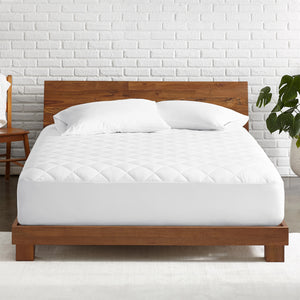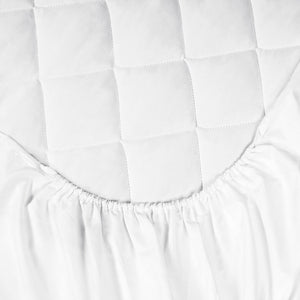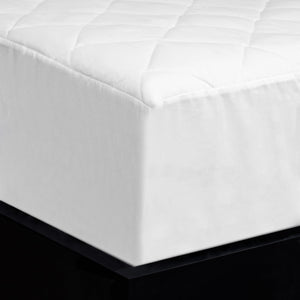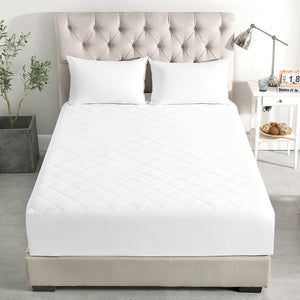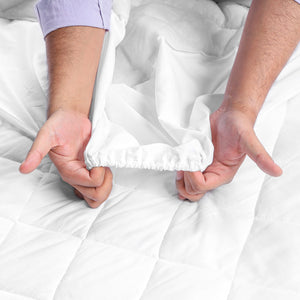How Long Do Memory Foam Mattresses Last?
When investing in a mattress, one of the primary concerns is its longevity. After all, a mattress is not just a piece of furniture; it's essential for our comfort, health, and sleep quality. Among the various types available, memory foam mattresses have gained significant popularity for their comfort and support. However, like all mattresses, they don't last forever. But how long can you expect a memory foam mattress to last? Understanding the lifespan of a memory foam mattress and the factors influencing it can help you make informed decisions about your bedding investments. Let's explore the factors influencing mattress longevity and strategies to extend its lifespan.
What Factors Influence Mattress Longevity?
Are you curious about what makes your mattress last longer? Let's delve into the key factors influencing its longevity and how to ensure your mattress stays comfortable and supportive for years.
1. Quality of Materials
Do you know what materials your mattress is made of? High-quality materials like natural latex, memory foam, and pocketed coils last longer than cheaper alternatives. But what exactly makes these materials durable?
- Natural Latex: Natural latex is known for its resilience and durability. Its elasticity helps it retain its shape over time, offering consistent support for your body.
- Memory Foam: memory foam mattresses are so popular. Their ability to contour to your body while returning to their original shape is attributed to their high-density foam composition.
- Pocketed Coils: These individually wrapped coils provide targeted support and reduce motion transfer, contributing to the longevity of your mattress.
2. Frequency of Use
How often do you use your mattress, and how does it impact its lifespan? Whether you sleep on it every night or it's used occasionally for guests, the frequency of use plays a significant role in its longevity.
- Daily Use: Do you spend most nights in bed? Constant compression from daily use can lead to wear and tear, causing your mattress to lose shape and support over time.
- Occasional Use: While infrequent use may prolong its lifespan, mattresses still need proper care and maintenance, regardless of how often they're used.
3. Maintenance and Care
Proper care can prevent premature sagging and deterioration, ensuring your mattress remains comfortable and supportive for years.

- Regular Rotation: Have you ever rotated your mattress? Rotating it every three to six months promotes even wear and prevents indentations, particularly for single-sided mattresses.
- Investing in a Mattress Protector: Do you use a mattress protector? Shielding your mattress from spills, stains, and dust mites can significantly extend its lifespan and keep it clean and hygienic.
- Cleaning Spills Promptly: Have you ever spilled something on your mattress? Promptly cleaning spills with a mild detergent and water can prevent stains and odours, preserving their freshness and integrity.
4. Environmental Conditions
Understanding these conditions can help you create an optimal sleeping environment from humidity to room temperature.
- Humidity Levels: Did you know that high humidity levels can promote mould and mildew growth? Investing in a dehumidifier or ensuring proper ventilation in your bedroom can prevent moisture buildup and prolong your mattress's lifespan.
- Room Temperature: Extreme temperatures can cause materials to expand or contract, potentially affecting their durability over time.
- Sunlight Exposure: Ultraviolet rays can break down materials and cause fading, so keeping your mattress out of direct sunlight or using window treatments to block UV rays is essential.
How Long Do Memory Foam Mattresses Last? - Average Lifespan Expectancy
Memory foam mattresses, known for their comfort and support, can last an average of 8 to 10 years. The longevity of a memory foam mattress depends on several factors, including its quality, usage, body weight, sleeping habits, environmental conditions, and maintenance.
Higher-quality mattresses tend to last longer due to better materials and construction. Regular rotation and use of a mattress protector can also extend the mattress's lifespan. Body weight and sleeping habits also affect the durability of a memory foam mattress.
Heavier individuals may experience faster wear and tear, while frequent movement during sleep can strain the mattress. Environmental factors like temperature and humidity can also affect the longevity of memory foam mattresses. Proper maintenance and cleaning are essential to preserve the mattress's integrity. Regular vacuuming and airing can prevent dust mites and moisture buildup, which can cause premature aging. Investing in a high-quality memory foam mattress can maximize lifespan and allow you to sleep for years comfortably.
When Is It Time To Replace Your Memory Foam Mattresses?
Now that we've established the general lifespan let's explore the signs indicating that your memory foam mattress may be nearing the end of its life.
1. Sagging or Indentations
Do you notice visible sagging or permanent indentations where you usually sleep? This is one of a memory foam mattress's most common signs of deterioration. Over time, the foam may lose its resilience, leading to sagging and uneven support.
2. Lumps or Bumps
Are there any lumps or bumps forming on the surface of your mattress? These irregularities indicate that the foam layers are breaking down, causing unevenness in the mattress surface.
3. Reduced Comfort and Support
Do you find yourself tossing and turning more often during the night? Are you waking up with aches and pains? These could indicate that your memory foam mattress no longer provides adequate support and comfort. As the foam degrades, it loses its ability to contour to your body, resulting in discomfort and poor sleep quality.
4. Allergies or Respiratory Issues
Have you noticed increased allergy symptoms or respiratory issues since using your memory foam mattress? Over time, dust mites, allergens, and other contaminants can accumulate within the mattress, exacerbating allergies and respiratory problems. If regular cleaning and maintenance don't alleviate these issues, it may be time to replace your mattress.
5. Visible Wear and Tear
Inspect your mattress for any visible signs of wear and tear. Are there tears, rips, or stains that cannot be removed? Physical damage to the mattress can compromise its structural integrity and comfort, indicating the need for a replacement.
6. Persistent Odours
Are there any persistent odours emanating from your mattress despite regular cleaning? Over time, memory foam mattresses may develop unpleasant odours due to accumulated sweat, body oils, and other substances. If these odours persist despite your best efforts to clean the mattress, it may be a sign that it's time for a new one.
How to Extend the Lifespan of Your Memory Foam Mattress?
Memory foam mattresses have gained immense popularity for their comfort and support. However, like any investment, taking proper care of them is essential to ensure longevity and maintain their pristine condition. In this guide, we'll explore effective strategies to extend the lifespan of your memory foam mattress, keeping it fresh, clean, and comfortable for years to come.
Regular Cleaning
How often do you clean your memory foam mattress? Dust mites, sweat, and dead skin cells are just a few things that can accumulate over time. Regular cleaning not only maintains hygiene but also extends the lifespan of your mattress. But how do you clean a memory foam mattress effectively?
- Start by vacuuming your mattress regularly to remove surface dust and debris. Consider using a handheld vacuum with a soft brush attachment to gently clean the surface without causing damage.
- Spot clean any stains promptly using a mild detergent or upholstery cleaner. Remember to dab, not rub, to avoid spreading the stain further. Allow the mattress to air dry thoroughly before covering it again.
- To combat odours, sprinkle baking soda over the mattress surface and let it sit for a few hours before vacuuming. Baking soda helps absorb moisture and neutralises odours, leaving your mattress smelling fresh.
Rotating and Flipping
Do you rotate and flip your mattress regularly? Memory foam mattresses are designed to provide optimal support but can develop indentations and sagging in specific areas over time. Rotating and flipping your mattress can help distribute weight more evenly, preventing premature wear and tear.
Rotate your mattress 180 degrees every few months to ensure that different areas bear the weight evenly. If your mattress is double-sided, flip it over once or twice a year to prevent permanent indentations and prolong its lifespan.
Using Mattress Protectors
Have you considered investing in a mattress protector? A quality mattress protector acts as a barrier against spills, stains, dust mites, and allergens, preserving the integrity of your memory foam mattress. But what should you look for in a mattress protector?
Opt for a waterproof, breathable mattress protector made from cotton or polyester. Waterproof protectors prevent liquids from seeping into the mattress, while breathable fabrics allow for airflow, reducing the risk of mould and mildew growth.
Ensure the mattress protector fits snugly around your mattress without causing bunching or slipping. Elasticated edges or deep pockets can help secure the protector, providing full coverage and protection.
Wash your mattress protector regularly according to the manufacturer's instructions to maintain effectiveness. Most protectors are machine washable, making them easy to clean and care for.
What Expert Recommends for Prolonging Mattress Lifespan?
- Protect your mattress from spills, stains, and dust mites with a high-quality mattress protector. It acts as a barrier, preserving your mattress's condition.
- Rotate your mattress every 3-6 months to prevent uneven wear and tear. This helps maintain its shape and support over time.
- Regularly vacuum and spot-clean your mattress to remove dust, dirt, and allergens. Follow the manufacturer's cleaning guidelines to avoid damage.
- Jumping or sitting on the edge of your mattress can weaken the springs and cause premature sagging. Use proper support when sitting on the edge.
- Ensure your mattress is placed on a sturdy, supportive bed frame to prevent sagging and promote airflow, prolonging its lifespan.
- Use a supportive foundation or box spring suitable for your mattress type to prevent sagging and maintain its integrity.
- Allow your mattress to breathe by removing bedding regularly and letting it air out. This helps prevent moisture buildup and keeps it fresh.
- Avoid placing heavy objects or too much weight on your mattress, which can damage it and reduce its lifespan.
- Refer to the manufacturer's instructions for care and maintenance specific to your mattress type to ensure longevity.
- For stubborn stains or odours, consider professional mattress cleaning services to maintain hygiene and prolong lifespan.
By following these expert tips, you can extend the life of your mattress and enjoy comfortable sleep for years to come.
Conclusion
While memory foam mattresses offer exceptional comfort and support, they have a finite lifespan. By understanding the factors influencing mattress longevity and following proper maintenance guidelines, you can extend the life of your memory foam mattress and ensure a restful night's sleep for years to come.
FAQs
How long does a memory foam mattress typically last?
The lifespan of a memory foam mattress typically ranges from 8 to 10 years with proper care and maintenance. However, factors such as quality of materials, frequency of use, and environmental conditions can influence its longevity.
Can memory foam mattresses be repaired?
Memory foam mattresses are not easily repairable, especially if the damage is significant. Minor issues like surface stains may be remedied with gentle cleaning methods, but structural damage or deep indentations usually require replacement rather than repair.
What should I do with my old memory foam mattress?
When disposing of an old memory foam mattress, consider recycling options if available in your area. Many mattress recycling facilities can break down the materials for reuse. Alternatively, you can check with local charities or non-profit organisations to see if they accept mattress donations.
Is it worth investing in a memory foam mattress with a longer lifespan?
Investing in a memory foam mattress with a longer lifespan can be worthwhile if you prioritise durability and longevity in your bedding. While such mattresses may have a higher initial cost, they can offer better value over time by lasting longer and providing consistent comfort and support.
How can I differentiate between genuine durability claims and marketing hype?
Differentiating between genuine durability claims and marketing hype can be challenging. It's essential to research and compare mattresses based on factors like materials, construction, customer reviews, and warranty coverage. Additionally, look for reputable brands with a record of producing high-quality, long-lasting mattresses.
What warranty coverage should I expect when purchasing a memory foam mattress?
Warranty coverage for memory foam mattresses typically varies depending on the manufacturer and specific mattress model. Most reputable brands offer warranties ranging from 5 to 20 years, covering manufacturing defects such as sagging beyond a certain threshold. Read the warranty terms and conditions carefully to understand what is included and any applicable limitations or exclusions.





